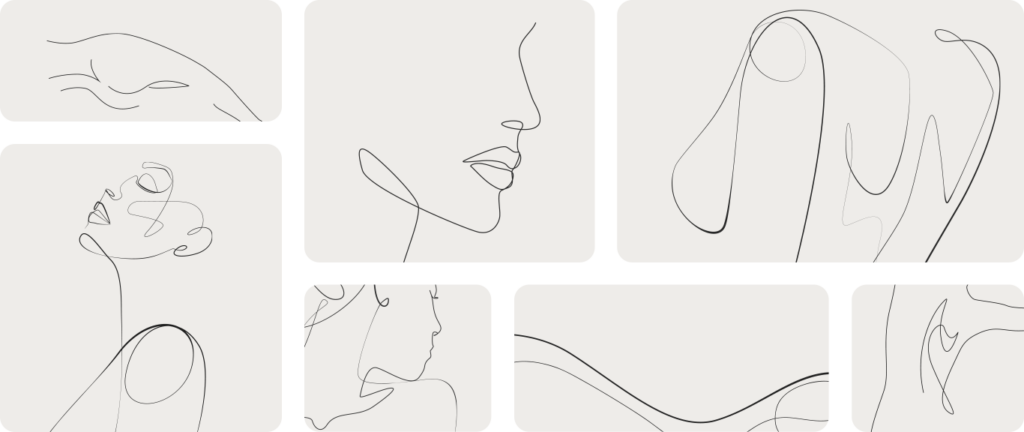Fat removal or liposuction, sometimes referred to as ‘lipo’ by the patients, is a surgery that slims and reshapes certain areas of the body by removing fat deposits and improving your body contours and proportion.
Fat removal (liposuction) is one of the most common plastic surgeries, one that is especially popular in western countries. The main purpose of the surgery is to give the body an appealing look.
Depending on the individual properties of each human body, fat can accumulate in different areas, especially where neither exercising nor diets are enough to burn it. Usually, fat removal surgery is performed on the abdomen, waist, thigh, back, inner knee, upper arm or chin areas and the sides of the body.
‘It’s important to understand that fat removal is not a substitute for a diet and exercising, nor is it a way to lose weight. Liposuction is a body contour modelling and perfection technique employing the reduction of unwanted accumulation of adipose tissue,’ says Dr Rokas Bagdonas, a plastic surgeon at Clinicus Klaipėda.
According to Dr Dainius Daunoravičius, a plastic surgeon at Clinicus Vilnius, the removal of fat and excess skin is carried out by applying advanced methods and using innovative technologies. It is equally important to select an adequately qualified specialist, as the surgery requires considerable accuracy and patience. Based on the best practises of plastic surgery and his own experience, Dr Dainius Daunoravičius states that the mechanical removal of excess fat, when a special metal tube (cannula) is inserted into the specified fat removal areas through tiny 2 mm incisions, is a most effective and reliable as well as the safest method.
His colleague Dr Rokas Bagdonas adds that innovative liposuction devices, such as the next-gen Lipomatic devices used by the surgeons at Clinicus, also contribute greatly to the success of the surgery. Unlike conventional liposuction devices, they have an infrasonic vibration feature installed, making the cannula vibrate at a frequency below 20 Hz, which allows not only achieving a considerably better result but also helps the body release endorphins that act as a natural anaesthetic and stimulate faster healing processes after the surgery.
Dr Rokas Bagdonas emphasizes that patients no longer have to worry about the tiny dimples on the skin or orange-peel appearance of the skin after fat removal surgery.
Both plastic surgeons state that the results of the liposuction procedure are considered to be long-lasting, since the removed fat cells do not grow back. However, according to them, one should not overlook the fact that the fat cells remaining after the liposuction may increase or decrease in their size, depending on the changes in body weight.
Plastic surgeons Rokas Bagdonas and Dainius Daunoravičius recommend their patients to wear a special corset for 4–6 weeks after the surgery, which will ensure the compression required for the successful healing of the tissues and the adaptation of the skin to the altered body contour. The scars at the cannula insertion sites are very small and quickly fade, especially if treated with special scar removal products.
Fat removal surgery may be combined with other surgical treatments, which usually is an abdominal wall plastic surgery, facial corrections or the enhancement of the breasts, buttocks or other body parts, using the fat removed previously. Thanks to the latest achievements in medical technologies and the expertise of the surgeons, the removed abdominal fat can be successfully transferred to enhance the breasts or the buttocks, thus achieving an even more exquisite body contour.
The plastic surgeons at Clinicus use advanced fat transplantation systems, preventing the fat from direct contact with air. Such systems, along with the liposuction system, ensure both higher viability of the stem cells present in the fat and the absorption of up to 90% of the transplanted fat.
The liposuction technique may be applied to reduce fat deposits in the following body areas:
- thighs
- hips and buttocks
- abdomen and waist
- upper arm
- back
- inner knee
- cheeks, chin and neck
- calves and ankles
Liposuction should not be seen as a weight reduction treatment, because its purpose is to shape a more exquisite body contour, and it is not meant to cure obesity; neither is it a substitute for diet and exercise or a way to improve the elasticity of the excess skin. However, if you feel uncomfortable about excess fat depositing in any area of the body despite a diet and sufficient exercise, liposuction is the right treatment for you.
The surgery is performed by making 4–5 mm incisions through which the unwanted fat is removed using a special cannula. The type of anaesthesia depends on the size of the fat removal area chosen by the patient and the amount of the fat to be removed. Where the surgery is performed under general anaesthesia, it is recommended to stay in the clinic for 1–2 days following the surgery.
The result of fat removal surgery is long-lasting. The liposuction procedure may be performed on almost all parts of the body, including the back and sides. Although a human body gradually loses firmness while ageing, the major part of the improvements will be lasting. You will be able to admire the new shape of your body when the swelling and the accumulation of fluids, which usually occurs after a liposuction treatment, subside (which takes about 1–2). The tiny and insignificant scar marks at the incision site will eventually fade away completely. Fat removal surgery may be followed by an excess skin removal and tightening treatment.
The prices of liposuction start at € 600


















